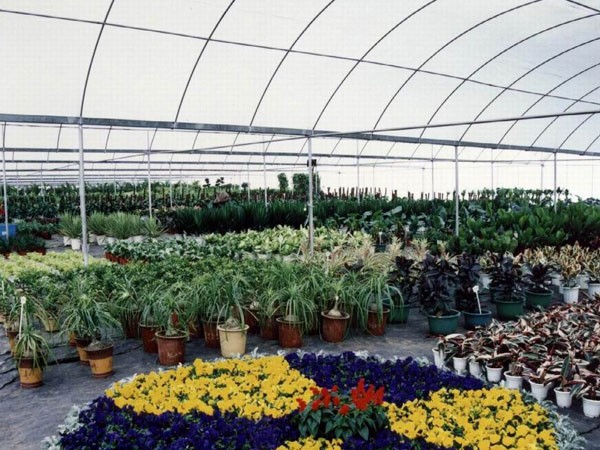[flower cultivation techniques] how to grow flowers scientifically
Now whether it is health, eating, exercise all pay attention to take scientific methods, flower cultivation is the same, scientific flower cultivation technology will be beneficial to the growth of flowers, while unscientific practices are easy to let flowers die in the pot.

First, how to grow flowers scientifically
Soil: it is required to use soil with good porosity, good drainage and air permeability, rich humus and low alkalinity. Such as vegetable land and woodland topsoil, pond mud and human feces and urine compost soil, deciduous turf is a very good soil for cultivation.
Water: watering should be timely and appropriate according to the water needs of flowers. If it is not dry or watered, it must be thoroughly watered. It is better to water in the morning and evening in summer and at noon in winter.
Fertilizer: fertilizer should be adequate, and fertilization is best when the leaves of the plant have become thinner and the growth is weak. It can be fertilized many times when the growth is exuberant, and less when the growth is slow. More nitrogen fertilizer was applied at seedling stage and phosphorus fertilizer was applied at bud stage. Apply the right amount of fertilizer each time.
Lighting: to know which flowers like strong light and which need only weak light, then determine the planting site of the flowers, and use the length of the oral photo to control the florescence.
Temperature: it has a great influence on the growth and flowering habits of flowers. Some flowers need to be warm before they can bloom. Such as peach blossom, magnolia, peony, while plum blossoms prefer to bloom in the depths of winter.

Second, how to prune flower branches correctly
1. Cut late but not early. Some tree species can be cut in winter, such as crape myrtle. After short pruning in winter, the branches look dry. When spring comes, new buds will grow on the short branches. But there are two situations that can cause winter shears to fail. First, tree species are not suitable, such as winter pruning of elm, its short branches will dry up because of water loss in a long and dry winter. Second, the branches are too thin to be suitable, no matter what kind of trees, winter pruning of branches that are too thin will inevitably cause the branches to die. In fact, "spring scissors" is better than "winter shears". Trees are pruned before sprouting in early spring, when the air temperature is higher, and new buds will sprout in a relatively short time, so there is no danger of branches drying up.
two。 Cut thick but not fine. If the branch is cut short into a receptacle, the length of the receptacle must be predetermined. It is assumed that the length of the receptacle will not change much after the work is formed. But if the branches are tender, they will continue to grow faster. In this way, the length of several levels of branch receptacle will greatly exceed the predetermined length, which appears to be out of proportion. The whole tree is slender, thin, and irreparable. Practice has proved that the correct way is to wait for the branches to be lignified and roughly grow to a predetermined thickness before cutting. In this way, the lateral branches are bound to form a better angle.
3. Cut fat but not thin. Generally speaking, the old branch is relatively thick, but the new branch has not yet grown, so it is necessary to cut the fat branch. And fat branches absorb more adequate nutrition, in order to avoid uneven nutrition, fat branches should also be subtracted.

Third, how to change the alkaline soil of potted flowers
1. First dig out most of the soil of the potted flowers, then add 1.2% ground sulfur powder to mix well, and then put the dug soil back into the flowerpot and pour enough water in time. In this way, it can not only make the soil loose, breathable and conducive to drainage, but also turn the alkaline soil into acidic soil.
two。 Irrigate 0.2% ferrous sulfate solution in the slightly alkaline basin soil, test the soil with test paper a few days later, and continue to irrigate until the acidic soil is formed.
3. Watermelon peel, apple peel, banana peel, pear peel and other fruit peel can be collected together and put into a container. The fruit peel is fully immersed in water, covered and sealed. After more than 20 days, the fruit peel will ferment. At this time, this kind of pericarp solution can be used to add 4 times of clear water to irrigate the alkaline potted flower soil every few days, which can not only turn the slightly alkaline soil into acidic soil, but also can be used as flower fertilizer.

You know, there are many flowers in nature, except for a small number of alkaline-loving flowers, most of them are acidic-loving flowers. And the soil is a prerequisite for breeding all flowers, so it is very necessary to acidify the soil of flowers scientifically.
Related
- Wuhan Hospital Iron Tree Blooming Result Was Instantly Frightened by the Gardener Master
- Which variety of camellia is the most fragrant and best? Which one do you like best?
- What is the small blue coat, the breeding methods and matters needing attention of the succulent plant
- Dormancy time and maintenance management of succulent plants during dormancy
- Minas succulent how to raise, Minas succulent plant pictures
- What are the varieties of winter succulent plants
- How to raise succulent plants in twelve rolls? let's take a look at some experience of breeding twelve rolls.
- Attention should be paid to water control for succulent plants during dormant period (winter and summer)
- Watering experience of twelve rolls of succulent plants
- Techniques for fertilizing succulent plants. An article will let you know how to fertilize succulent plants.



